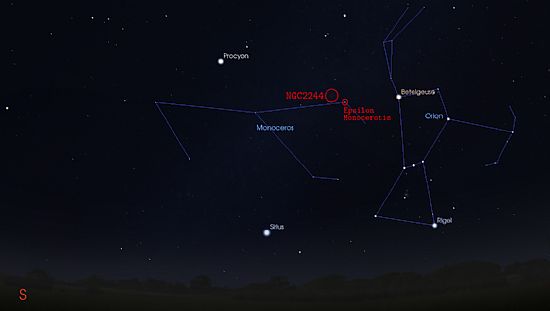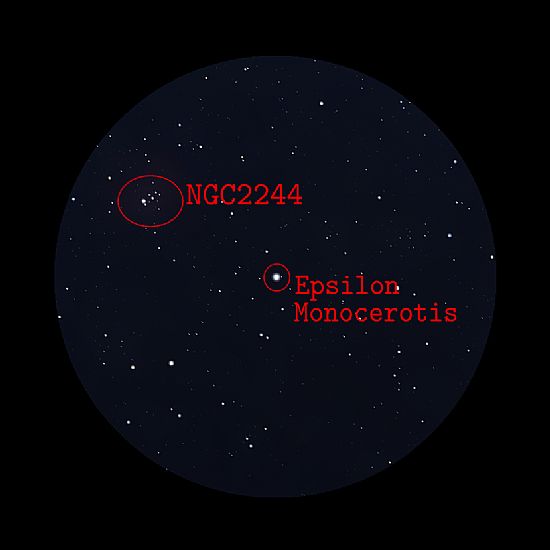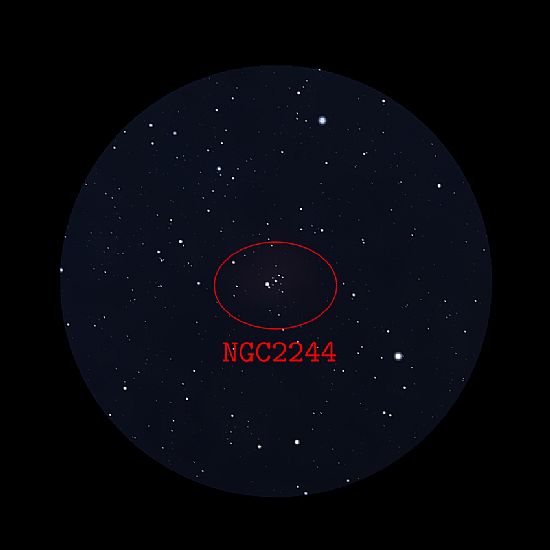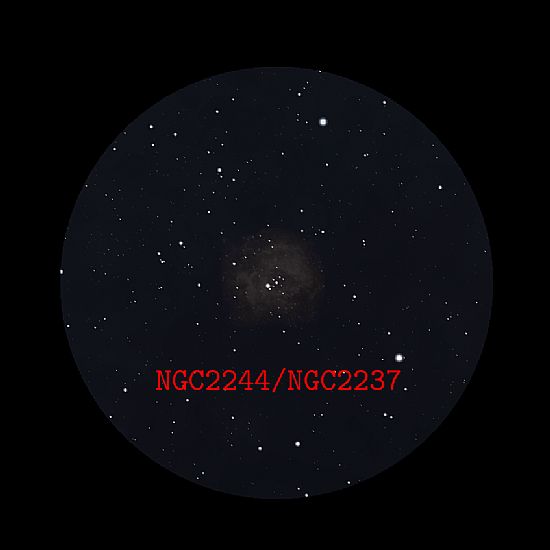Weekly Binocular Objects
WBO 8: 2018 Week 12 (21st Mar) - NGC2244/2237 (Rosette Cluster/Nebula)
We’re going to target an open star cluster this week in the constellation of Monoceros. Although this constellation is a new one for this series, you’ll be familiar with the general area of the sky since it is located right beside Orion. Our target is the cluster NGC2244, C50 or simply the Rosette. This cluster can, under favourable conditions, show a bit more than just stars…
Firstly we’ll locate Monoceros, for which we can use the familiar shape of Orion in the South Western sky at around 21:00. Look a little to the left of Orion, and well, you probably won’t see too much! Monoceros is a rather faint constellation, although it is quite large. Fortunately we can find the general area of the constellation by also using Sirius, the brightest star in the sky - Monoceros lies to the left of Orion and directly above Sirius, as shown in Image 1.
Now we know where our host constellation is, we can locate the cluster NGC2244. Return to Orion, and find the top left star Betelgeuse in your binocular field of view. Now move your binocular to the left so that Betelgeuse is just on the right-hand edge of the view, and continue panning left for slightly more than one complete field of view. You should now be centered on a fairly obvious star, Epsilon (?) Monocerotis, as shown in Image 2. If you then look to the upper left of this star in your field of view, you’ll notice a tight grouping of stars - this is our target cluster NGC2244.
Image 3 shows the binocular view centered on the cluster. As you observe the object, you may begin to notice a faint halo around the cluster - this is a vast HII region (an area of ionised hydrogen gas - perfect star-forming material) known as the Rosette Nebula. The Rosette is actually in several parts, each with its own designation, but can be referred to with the collective designation NGC2237. The nebula, along with the cluster, lies around 5000 light years from Earth, and spans around 130 light years. It is an active star forming region, and the stars of the cluster NGC2244 were born out of the nebulosity. Image 4 shows a simulated binocular view of the object, with an indication of the nebulosity.
Whilst the cluster should be easy to see from almost anywhere, the nebula can be tricky from light polluted locations, so a dark sky trip might be required to catch this one. When observed from a dark site, however, the nebula is readily visible and on good nights shows delicate wispy structures and extends to quite a size.
The Moon may interfere with observations this week, but a late-night observation before the weekend should yield a good view of this cluster/nebula combination.
(all images from Stellarium - www.stellarium.org )

Image 1: Locating Monoceros using Orion and Sirius

Image 2: Simulated binocular view (10x) centered on Epsilon Monocerotis

Image 3: Simulated binocular view (10x) centered on cluster NGC2244

Image 4: Simulated binocular view (10x) centered on cluster NGC2244 showing NGC2237 nebula